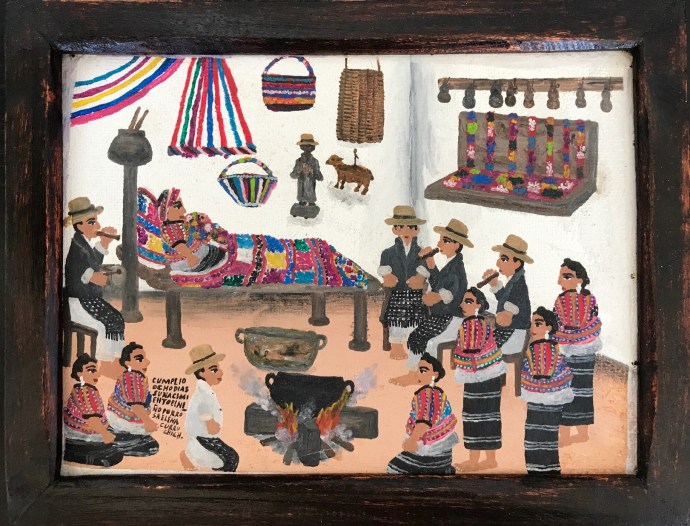This is less of a review and more of a story about how I came to learn of the book Neither Wolf Nor Dog, and then my process through attempts to understand its full, often uncomfortable meaning.

About this time a year ago I received an invitation, really it was delivered as a demand, from a Lakota elder that I come to South Dakota to receive teachings. It came at a time I was continually traveling, barely home but longing to be. When I thanked him and attempted to arrange a time that made it easier for me, he became insistent. We finally settled on a time. For me, it meant giving up the only travel-free week I’d had in some time. I wasn’t sure what this was all about, and didn’t know the elder. The prior contact we’d had was relatively brief, a long phone call. I finally decided it was something I was being called to do.
I would like to say it was a meaningful journey and a great sharing passed between us. Instead, our time ended abruptly. I left with even more confusion than I’d periodically felt over those days and a high level of frustration, angry at myself that I’d been talked into coming. Clearly, there was much he kept tightly wrapped. Although, it sometimes emerged in ways I wasn’t used to dealing with, much less how to respond adequately. But I was going directly to another commitment, one that mattered a lot to me. So I tucked the strong emotions away and chalked the whole thing up to a mystery of the Universe.
Before I made that trip to South Dakota, I’d mentioned it to a friend. She said there was a book she thought would be good for me to read. I dutifully ordered Neither Wolf Nor Dog but didn’t have time to read it before I left. It found its place on my bookshelf where it languished. I hadn’t known it was made into a movie. Some months later it was being shown where I live, and I followed the strong urge to see it.
The film hadn’t progressed very far when I began to get the eerie feeling of dejá vu. An author from Minnesota, Kent Nerburn, received a cryptic phone call out of the blue from a woman saying her Lakota grandfather wanted to see him. No reason given but delivered with a sense of urgency. Some months later, Nerburn—as he came to be called—finally was able to free up some time to make the long trip to the isolated place the elder Dan called home. There were few explanations given to Nerburn, punctuated with a lot of silences. Quickly, Dan’s younger Lakota friend Grover was introduced into the story, a caustic individual with barely contained anger frequently directed toward Nerburn in clipped tones and looks. Frankly, I wondered why Nerburn stayed around. I think he did, too. He wrestled with his own responses and ultimately decided to let things play out. Plus, he had the nice guy syndrome going.
I experienced repeated slaps in the face watching all this. It was visceral. When Dan and Grover threw Nerburn in the car and took off on a little explained, exhaustive trip across the Dakotas, my forearms puckered into chicken skin that didn’t go away until the film ended. There were just too many parallels. The places they went, the flavor of the discourse. Showing rather than telling. When Dan broke silences to hold forth on what he wanted Nerburn to learn of the Lakota people…what he wanted Nerburn to put out there in writing… Well, I don’t have words for what I felt.
Clearly, I was not going to be allowed to tuck away my still strong emotions and bewilderment about the journey I took to the Dakotas. I can only believe unseen forces were taking me by the hand to engage with all of it.
So I started to read the book. It was not easy going for me. I could only read a few pages at a time. Then I’d have to digest the contents. Most of the things covered in Neither Wolf Nor Dog I knew about in some form: the atrocities done to Native peoples by whites, cultural differences in beliefs and values…and then there’s appropriation of Native traditions by white people searching to find spiritual grounding…or those who seek to do good but hold a hidden agenda. But I hadn’t found anything to the depth or in the frame presented by Dan, and even Grover, in this writing. The book naturally goes much deeper than the movie ever could.
It took me over two months to read Neither Wolf Nor Dog. I stepped back numerous times to examine the level of my own assumptions and awareness, as well as my motivations behind the work I’ve devoted twenty years of my life. It was a necessary, intensive process. I can’t say it’s over. Instead, it’s all percolating some place inside. I don’t know what will finally emerge.
Neither Wolf Nor Dog is book one of a trilogy that recounts the story of an Indian elder, the surrounding Lakota community, and the white man who somehow has been called to be part of the Truth-naming. The Wolf at Twilight is about Dan’s search for his long-lost sister Yellow Bird who, kidnapped from her home some eighty years before, never returned from the Indian boarding school. The Girl Who Sang to the Buffalo brings back the things many have forgotten: the meaning of dreams, the abilities to engage with nature and speak with animals. Sadly, it uncovers the existence of a secret asylum and events that took place there.
Kent Nerburn says these books are fictional accounts of actual events. The truths are in each sentence and have global application. This isn’t merely history. It’s today.
The books are available on Amazon or elsewhere. The movie may still be making the rounds in theaters. Hopefully, it will be offered streaming soon.
***
With many thanks to Karen Marchetti who turned me on to Neither Wolf Nor Dog. Without this guidebook I may never integrate the odyssey I was strangely called to undertake.




